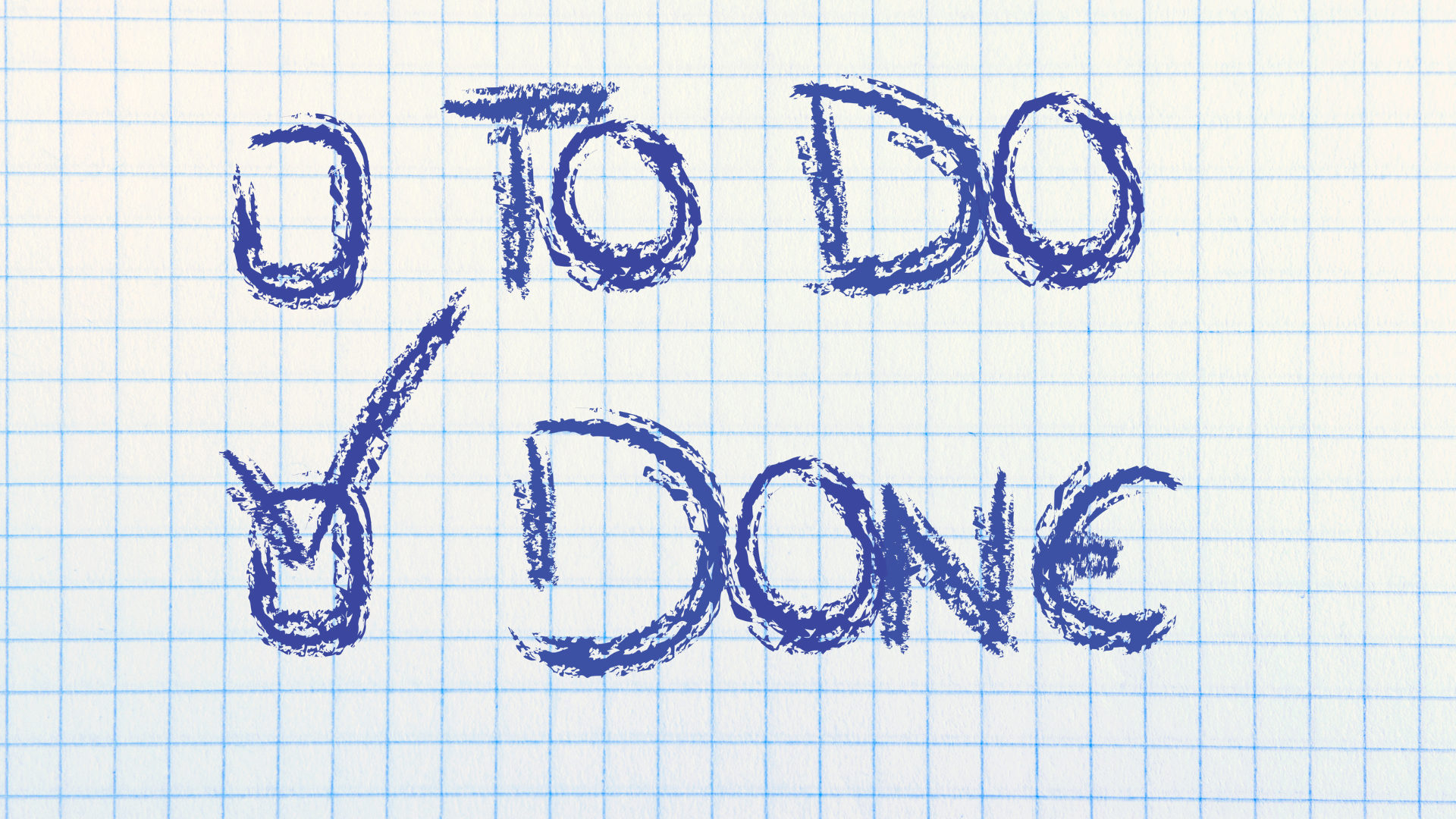3 Ways to Get Stuff Done - Part 3
How to Stop Procrastinating-
Overcoming the Habit of Delaying Important Tasks

It's Friday afternoon and the clock is ticking. You're working furiously to complete a task before the five o'clock deadline, while silently cursing yourself for not starting it sooner.
How did this happen? What went wrong? Why did you lose your focus?
Well, there were the hours that you spent re-reading emails and checking social media, the excessive "preparation," the coffee breaks, and the time spent on other tasks that you could have safely left for next week.
Sound familiar? If so, you're not alone!
Procrastination is a trap that many of us fall into. In fact, according to researcher and speaker Piers Steel, 95 percent of us procrastinate to some degree. While it may be comforting to know that you're not alone, it can be sobering to realize just how much it can hold you back.
In this article and video, we look at why it happens, and we explore strategies for managing and prioritizing your workload more effectively.
Is Procrastination the Same as Being Lazy?
Procrastination is often confused with laziness, but they are very different.
Procrastination is an
active process – you
choose to do something else instead of the task that you know you should be doing. In contrast, laziness suggests apathy, inactivity, and an unwillingness to act.
Procrastination usually involves ignoring an unpleasant, but likely more important task, in favor of one that is more enjoyable or easier.
But giving in to this impulse can have serious consequences. For example, even minor episodes of procrastination can make us feel guilty or ashamed. It can lead to reduced productivity and cause us to miss out on achieving our goals.
If we procrastinate over a long period of time, we can become demotivated and disillusioned with our work, which can lead to depression and even job loss, in extreme cases.
How to Overcome Procrastination
As with most habits, it is possible to overcome procrastination. Follow the steps below to help you to deal with and prevent procrastination:
Step 1: Recognize That You're Procrastinating
You might be putting off a task because you've had to re-prioritize your workload. If you're briefly delaying an important task for a genuinely good reason, then you aren't necessarily procrastinating. However, if you start to put things off indefinitely, or switch focus because you want to avoid doing something, then you probably are.
You may also be procrastinating if you:
Fill your day with low-priority tasks.
Leave an item on your To-Do list for a long time, even though it's important.
Read emails several times over without making a decision on what to do with them.
Start a high-priority task and then go off to make a coffee.
Fill your time with unimportant tasks that other people ask you to do, instead of getting on with the important tasks already on your list.
Wait to be in the "right mood," or wait for the "right time" to tackle a task.
Step 2: Work Out WHY You're Procrastinating
You need to understand the reasons why you are procrastinating before you can begin to tackle it.
For instance, are you avoiding a particular task because you find it boring or unpleasant? If so, take steps to get it out of the way quickly, so that you can focus on the aspects of your job that you find more enjoyable.
Poor organization can lead to procrastination. Organized people successfully overcome it because they use prioritized To-Do Lists and create effective schedules. These tools help you to organize your tasks by priority and deadline.
Even if you're organized, you can still feel overwhelmed by a task. Perhaps you have doubts about your ability and are worried about failing, so you put it off and seek comfort in doing work that you know that you're capable of completing.
Some people fear success as much as failure. They think that success will lead to them being swamped with requests to take on more tasks.
Surprisingly, perfectionists are often procrastinators. Often, they'd rather avoid doing a task that they don't feel they have the skills to do, than do it imperfectly.
Another major cause of procrastination is poor decision-making. If you can't decide what to do, you'll likely put off taking action in case you do the wrong thing.
Warning:
For some people, procrastination is more than a bad habit; it's a sign of a serious underlying health issue. For example, ADHD , OCD , anxiety, and depression are associated with procrastination.
Also, research suggests that procrastination can be a cause of serious stress and illness. So, if you suffer from chronic or debilitating procrastination, one of these conditions could be to blame, and you should seek the advice of a trained professional.
Step 3: Adopt Anti-Procrastination Strategies
Procrastination is a habit – a deeply ingrained pattern of behavior. This means that you probably can't break it overnight. Habits only stop being habits when you avoid practicing them, so try as many of the strategies, below, as possible to give yourself the best possible chance of succeeding.
Forgive yourself for procrastinating in the past. Studies show that self-forgiveness can help you to feel more positive about yourself and reduce the likelihood of procrastination in the future.
Commit to the task. Focus on
doing, not
avoiding. Write down the tasks that you need to complete, and specify a time for doing them. This will help you to proactively tackle your work.
Promise yourself a reward. If you complete a difficult task on time, reward yourself with a treat, such as a slice of cake or a coffee from your favorite coffee shop. And make sure you notice how good it feels to finish things!
Ask someone to check up on you. Peer pressure works! This is the principle behind self-help groups. If you don't have anyone to ask, an online tool such as Procraster can help you to self-monitor.
Act as you go.
Tackle tasks as soon as they arise, rather than letting them build up over another day.
Rephrase your internal dialog. The phrases "need to" and "have to," for example, imply that you have no choice in what you do. This can make you feel disempowered and might even result in self-sabotage . However, saying, "I choose to," implies that you own a project, and can make you feel more in control of your workload.
Minimize
distractions . Turn off your email and social media, and avoid sitting anywhere near a television while you work!
Aim to
"eat an elephant beetle" first thing, every day! Get those tasks that you find least pleasant out of the way early. This will give you the rest of the day to concentrate on work that you find more enjoyable.
Tip:
An alternative approach is to embrace "the art of delay." Research shows that "active procrastination" – that is, deliberately delaying getting started on something so you can focus on other urgent tasks – can make you feel more challenged and motivated to get things done. This strategy can work particularly well if you are someone who thrives under pressure.
However, if you do decide to actively procrastinate, be sure to avoid putting your co-workers under any unnecessary, unpleasant and unwanted pressure!
If you're procrastinating because you find a task unpleasant, try to focus on the "long game." Research shows that impulsive people are more likely to procrastinate because they are focused on short-term gain. Combat this by identifying the long-term benefits of completing the task. For instance, could it affect your annual performance review or end-of-year bonus?
Another way to make a task more enjoyable is to identify the unpleasant consequences of avoiding it. For instance, what will happen if you don't complete the work? How might it affect your personal, team or organizational goals?
At the same time, it can be useful to reframe the task by looking at its meaning and relevance . This will increase its value to you and make your work more worthwhile. It's also important to acknowledge that we can often overestimate the unpleasantness of a task. So give it a try! You may find that it's not as bad as you thought, after all!
If you procrastinate because you're disorganized, here are six strategies to help you get organized:
Keep a To-Do List. This will prevent you from "conveniently" forgetting about those unpleasant or overwhelming tasks.
Prioritize your To-Do List using
Eisenhower's Urgent/Important Principle . This will enable you to quickly identify the activities that you should focus on, as well as the ones you can ignore.
Become a master of
scheduling and project planning. If you have a big project or multiple projects on the go and you don't know where to start, these tools can help you to plan your time effectively, and reduce your stress levels.
Tackle the hardest tasks at your
peak times . Do you work better in the morning or the afternoon? Identify when you're most effective, and do the tasks that you find most difficult at these times.
Set yourself time-bound
goals . Setting yourself specific deadlines to complete tasks will keep you on track to achieve your goals, and will mean that you have no time for procrastination!
Use task- and time-management apps.
There are numerous apps designed to help you to be more organized, such as Trello and Toggl, for example.
If you're prone to delaying projects because you find them overwhelming, try breaking them down into more manageable chunks. Organize your projects into smaller tasks and focus on
starting them, rather than on
finishing them.
In his 2011 book, "The Procrastination Cure ," Jeffery Combs suggests tackling tasks in 15-minute bursts of activity. Alternatively, you can create an Action Plan to organize your project. Start with quick and small tasks first. These "small wins" will give you a sense of achievement, and will make you feel more positive and less overwhelmed by the larger project or goal that you are working towards.
Finally, if you think that you are putting something off because you can't decide what action to take or you find it hard to make decisions, take a look at our range of decision-making tools to help you to develop your decision-making skills.
Key Points
Procrastination is the habit of delaying an important task, usually by focusing on less urgent, more enjoyable, and easier activities instead. It is different from laziness, which is the unwillingness to act.
Procrastination can restrict your potential and undermine your career. It can also disrupt teamwork, reduce morale, and even lead to depression and job loss. So, it's crucial to take proactive steps to prevent it.
The first step to overcoming procrastination is to recognize that you're doing it. Then, identify the reasons behind your behavior and use appropriate strategies to manage and overcome it.
References:
Chapter 1: http://EzineArticles.com/10550445
Photo by youssef naddam on Unsplash
Chapter 2: http://EzineArticles.com/10498014
Photo by Stephen Leonardi on Unsplash
Chapter 3: https://www.mindtools.com/pages/article/newHTE_96.htm
Photo by Eden Constantino on Unsplash
Life Beyond Boundaries


